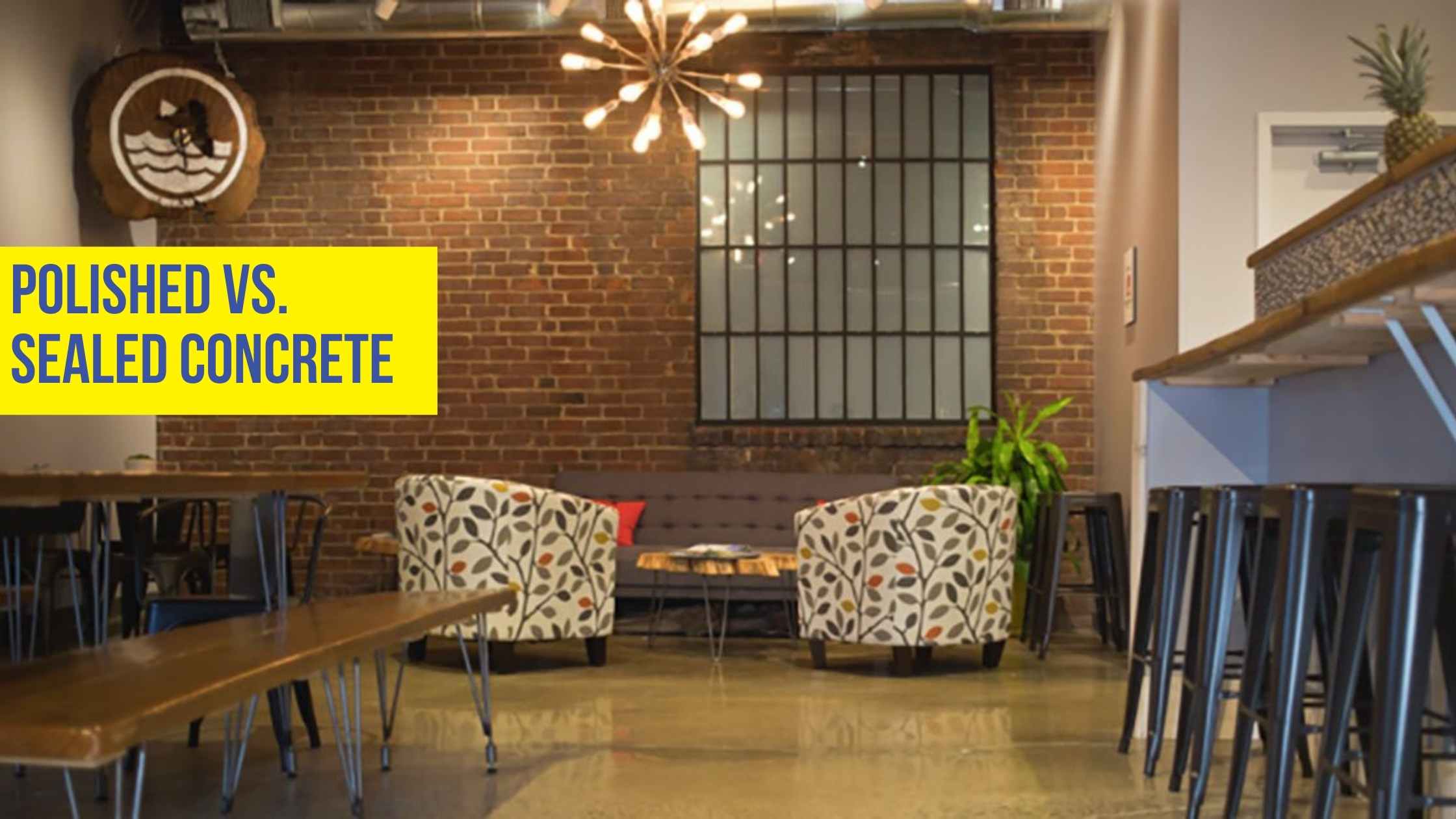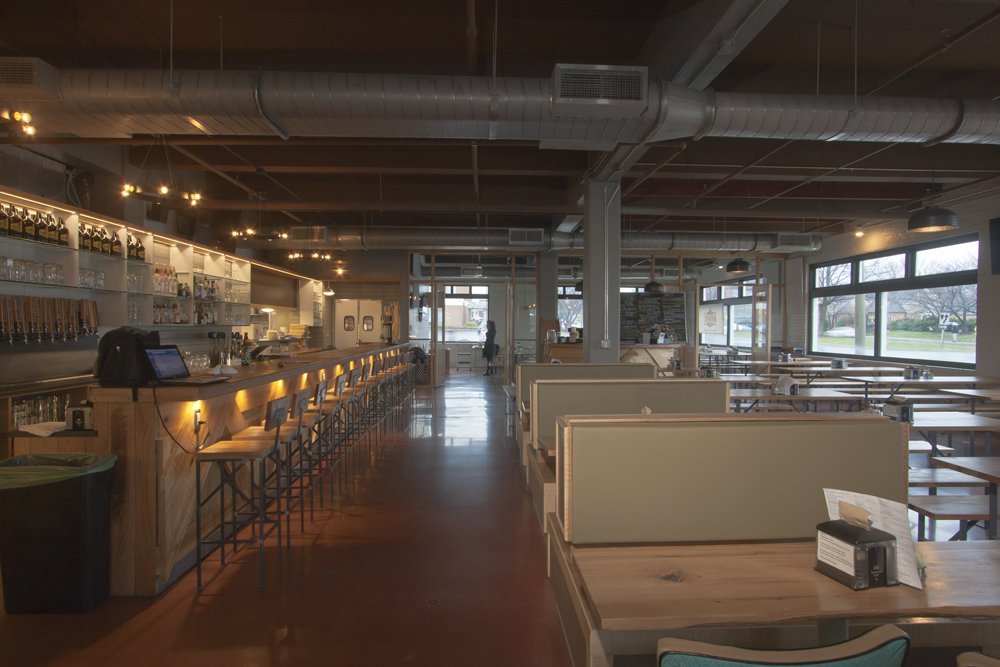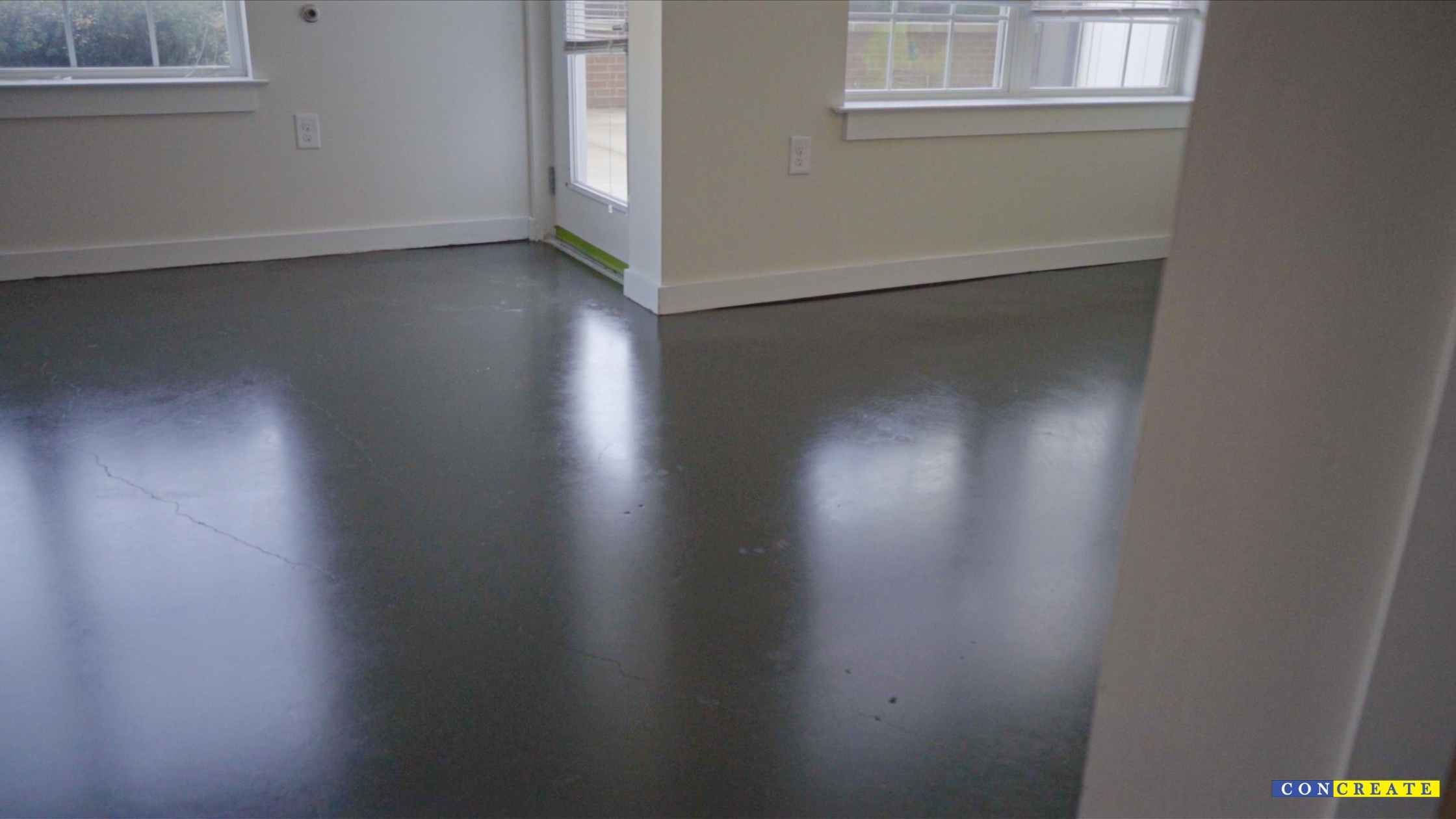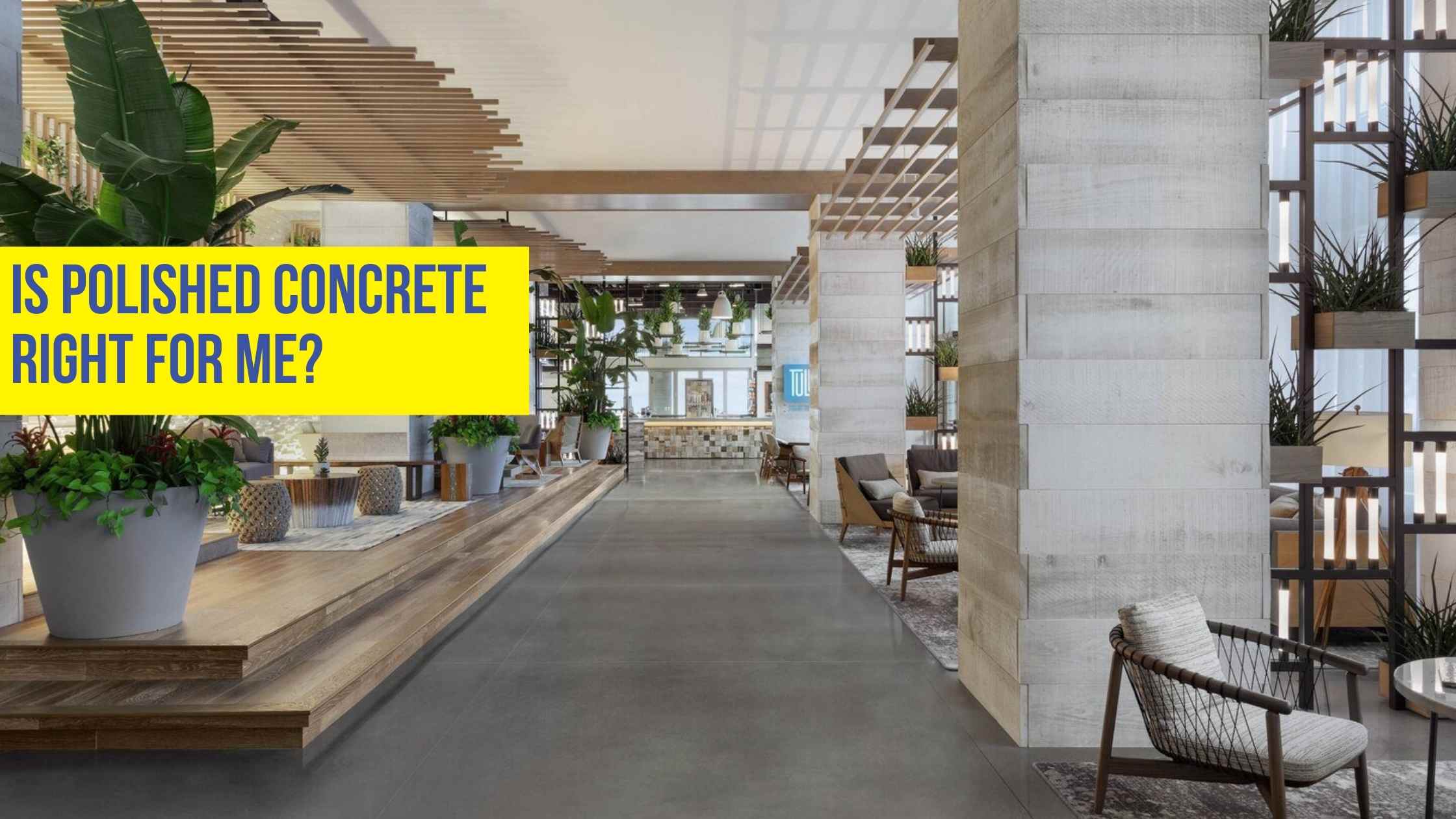
Polished Vs. Sealed Concrete
In the world of concrete, some terminology gets lost in translation. Contractors, of course, could tell you the difference between discoloration and a stain. They could give you a short rundown (that you wouldn’t understand) on diamond tooling and grinding processes. They might even show you images of polished concrete vs. sealed concrete and ask you which you prefer.
One problem: all you see are two different shiny floors.
You consider yourself in a good place with concrete, knowledge-wise. You know enough to start the conversation, at least. You have concrete already, and it’s in good condition (and if it’s not, there’s a different discussion that needs to be had before you proceed further). You’re ready to get the basic facts that will help you choose your concrete flooring project here and now.
Polished concrete and sealed concrete are two highly different processes, and Concreate offers both. We’re commonly asked what the difference between polished and sealed concrete is, especially when customers are in the process of weighing their options.
The answer is simple: the two concrete processes serve different use cases, are installed entirely differently, and are not even close to being equally durable. It’s important to come away from this question with a good understanding of how the two options differ. We’re here to help you understand the difference between polished concrete and sealed concrete and get your project started.
In this article, we’ll take a brief look at the processes for both polished and sealed concrete, pinpoint some ideal use cases, and help you understand enough to make the right choice.

What is Polished Concrete?
First, the technical stuff:
Polished concrete is a mechanical grinding and polishing process that uses industrial tools to flatten, densify, polish, and seal the floor from within the interior of the floor surface.
Basically, that means: A contractor will grind the concrete surface with specialized fine diamond abrasives until it’s smooth and shiny (if desired). This process creates unique flooring by uncovering the natural layer of concrete hidden beneath. It’s truly an art form, and it’s a popular choice for high-traffic areas.
The Pros of Polished Concrete
As with any other flooring option, polished concrete has its ideal uses, and it has excellent perks:
Low Maintenance and Durable: While it’s not maintenance-free (nothing in life is), it’s the lowest maintenance floor you can have. It’s also easy to clean, needing only a Swiffer in some instances.
Ease of Movement: Carts and machinery roll easily on polished concrete floors, so moving merchandise around is an easier task. It’s flat, making transitions between slabs and joints smooth. Warehouses, hangars, and other large spaces are a perfect match for this type of flooring.
Affordability: Savings-wise, polished concrete will be cheaper than most materials in the long run (terrazzo, for example). Something like VCT (vinyl composition tile) may be cheaper to put down, but the durability of polished concrete makes it a better expense over its lifecycle. It’s also more affordable if you already have concrete flooring.
Where Should You Use Polished Concrete:
Polished concrete works wonders in certain types of areas. Large spaces benefit greatly from the beautiful flooring, for instance. Some of the best places to use polished concrete:
- High-end residential
- Firehouses
- Warehouses
- Retail
- Hangars and airports
- Office suites
- Basements and garages
- Showrooms
- Industrial plants
- Government buildings
The Cons of Polished Concrete
Polished concrete sounds impressive, right? Well, there are certain instances where the versatile flooring should be your second option.
If your concrete is going in one of these places, you may want to reconsider:
Places Where People are Standing for Long Periods
Polished concrete is still concrete – it’s incredibly hard. Standing on it for long periods of time isn’t ideal. Fatigue mats can help with the issue.
Kitchens or Bathrooms in Food Service
Fats, greases, and other staining materials will make the floor look dirty over time. While grease spills won’t damage the floor structurally, polished concrete could be permanently stained if not treated immediately after mishaps. Busy kitchens that are prone to messes make a terrible candidate for this reason.
Public restrooms are also prone to staining (for reasons we won’t mention).
Places That Work With Acids
Acids will ruin polished concrete, so anywhere that deals with acid solutions should avoid the flooring. You can immediately rule out places that deal with a lot of strong chemicals, like:
- Orange juice manufacturers
- Milk-producing manufacturers
- Battery storage areas
- Anywhere that cleans with acid-solutions
Around Swimming Pools
While polished concrete is not slick, placing it around swimming pools is a recipe for disaster. It’s smooth, shiny, and extremely hot in the sun.
What is Sealed Concrete?
Sealed concrete is easier to explain, so there is no need for a highly technical explanation. It’s a layer of acrylic “plastic” (more expensive options like epoxy or polyurethane exist as well) that is spread over your concrete flooring, filling any imperfections. The process is more like painting than grinding and buffing, and it produces a much different result (aside from the general shininess). Once the surface dries, the acrylic plastic fills the gaps in the concrete and becomes shiny. There are many types of sealed concrete, but the gist is that sealed concrete protects a floor by forming a layer of film over the entire surface.
Sealed concrete is the best option for areas with a high potential for grease staining. For less traveled areas, sealed concrete can be a good choice. While sealed concrete isn’t as beautiful as polished concrete, it definitely has an advantage when it comes to areas that are prone to staining.
The Pros of Sealed Concrete
Sealed concrete is perfect for low-traffic areas with a high potential for stains and spills. Some specially-made sealers can prevent moisture damage under finished floors. They have a few perks that make sense if you’re trying to decide on sealed or polished:
- Specially formulated to prevent moisture intrusions (sometimes)
- Best for low traffic areas
- Great for areas prone to grease staining
- Highly resistant to stains and chemical damage
- Fast install time
- High gloss
- Low cost
- Extremely fast to install
Sealed concrete can also help prevent freeze-thaw problems for flooring in cold areas. In general, a good practice for deciding on sealed concrete is to understand the temperatures and traffic of the areas you’ll put it in.
Where You Should Put Sealed Concrete:
- Driveways
- Garage Floors
- Storage Rooms
- Stairwells
The Cons of Sealed Concrete
Prone to damage
One major downside of sealed concrete is durability. Compared to polished, sealed concrete requires more maintenance and is susceptible to wear in traffic-heavy areas. It erodes with use, sometimes even down to bare concrete. With this in mind, it’s essential to understand that maintenance and upkeep for sealed concrete is a much more frequent job than with polished concrete, which often only requires you to clean up stains and avoid acidic solutions quickly.
Weak to moisture
Sealed concrete is susceptible to damage by moisture coming up through the slab. They’re also:
- Worse for the environment than polished (higher VOCs)
- Requires much more physical material and maintenance than polished concrete
More expensive alternatives (epoxy or polyurethane) aren’t always the best option. They’re thicker and can cause white haze to form between the concrete and the sealer.

Which is Better, Polished Concrete or Sealed Concrete?
The best choice for your flooring depends on your specific situation.
Here are two questions to start you off:
- Where is your project located?
Polished concrete is best for high-traffic areas and large rooms. Polished concrete is the best choice if your flooring project is for a site that will experience large groups of people, heavy machinery, or lots of rolling and scuffing. Sealed concrete cannot handle the traffic, so any high-traffic regions are better served by polished concrete.
- Will there be chemicals or grease used around your flooring?
Polished concrete is the choice for high traffic unless those areas are prone to staining, used in highly acidic environments, or somewhere like a public restroom. Stained concrete is the answer here. It’s built to protect against grease and staining.
Every project has its perfect match, so consider these differences and options before deciding. At the end of the day, the decision breaks down to way more than two shiny floors. If you need help going over the sometimes difficult choice between polished and sealed concrete, Concreate would be more than happy to walk you through your options.
Contact us to get started!

